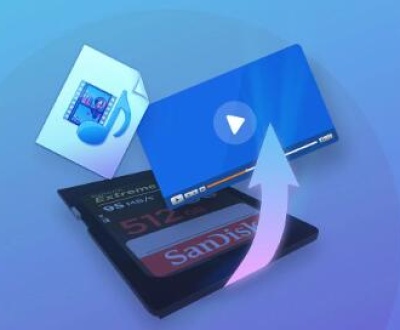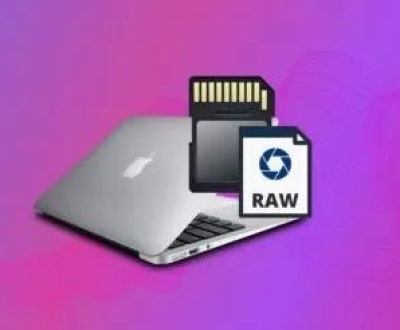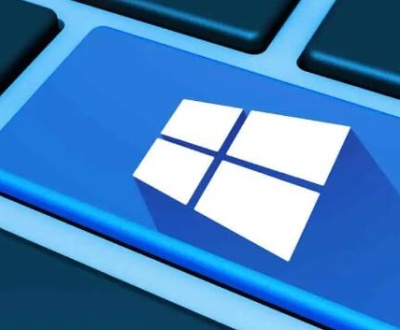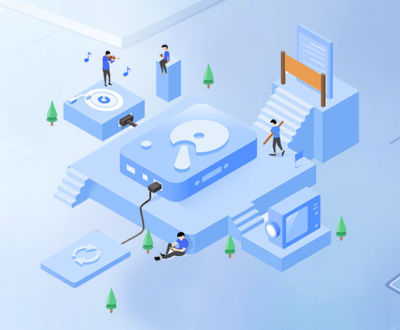A crashed hard disk is every computer user’s nightmare. In the blink of an eye, your personal memories, important documents, creative projects, or business data can seem to vanish without a trace. Whether it happens suddenly or after weeks of warning signs, the moment your hard drive fails is deeply unsettling. But here’s the good news a crashed hard disk doesn’t always mean lost data. In many cases, the data can still be recovered by using the right methods, tools, and professional services.
What Does It Mean When a Hard Disk Crashes?
The term “hard disk crash” refers to a situation where your hard drive either stops working altogether or experiences serious malfunctions that prevent access to data. Crashes are usually caused by:

1. Physical Failure
This occurs when internal components of the hard drive are physically damaged. Examples include:
Head crashes: The read/write head touches the spinning platter and scratches the magnetic surface.
Motor failure: The spindle motor that spins the platters stops functioning.
Circuit board failure: The controller board that communicates with your computer is damaged.
Water/fire/shock damage: From drops, floods, power surges, or overheating.
2. Logical Failure
This happens when the hardware is physically fine but the data can’t be accessed due to corruption. Causes include:
File system errors
Virus or malware infections
Corrupt firmware
Partition table corruption
Software crashes during write operations
In both cases, your computer may fail to boot, display “disk not recognized” messages, or show blue screen errors. But importantly—data is often still recoverable, especially if the right steps are taken promptly.
Common Signs of a Crashed Hard Disk
Recognizing the signs of a hard disk crash early can significantly improve your chances of recovery:
Clicking, grinding, or buzzing noises from the drive
System fails to boot or BIOS can’t detect the drive
Frequent freezes, crashes, or blue screen errors
File or folder names turning into gibberish
Disk asking to be formatted when accessed
Slow performance or failure to open files
If you observe any of these symptoms, stop using the drive immediately. Continued use could make data recovery harder or even impossible.
Immediate Steps to Take After a Hard Disk Crash
1. Stop Using the Drive
This is crucial. If the crash is physical, spinning the disk can cause more damage. If it’s logical, using the drive might overwrite recoverable data.
2. Determine the Nature of the Crash
Try to understand whether the failure is physical or logical. Listen for strange sounds (indicating mechanical damage) or check if the drive appears in Disk Management (if it does, it might be a logical failure).
3. Do Not Attempt DIY Repairs on Physically Damaged Drives
Opening a hard drive outside of a cleanroom environment can expose it to dust particles and irreparably damage the platters. Leave physical recoveries to professionals.
4. Create a Disk Image (if possible)
If your drive is still readable but showing signs of failure, use disk imaging software to create a byte-by-byte clone of the drive. Work from this image during recovery to avoid stressing the original drive.
Types of Crashed Hard Disk Recovery Methods
Depending on the severity and nature of the crash, there are several data recovery approaches you can consider.
1. Software-Based Recovery (For Logical Failures)
This is suitable when your system detects the drive but cannot access the data properly. Common scenarios include accidental deletion, formatting, partition loss, or file system errors.
Popular tools include:
Recuva: User-friendly and good for basic recovery.
EaseUS Data Recovery Wizard: Strong for formatted or corrupted drives.
R-Studio: Powerful but more complex; ideal for professionals.
TestDisk and PhotoRec: Open-source tools for partition and file recovery.
Note: Install the recovery software on a different drive to prevent overwriting your lost data.
2. Manual Recovery via Command Line
For those comfortable with command line tools, commands like chkdsk, sfc /scannow, or diskpart can sometimes repair disk errors or restore access to partitions.
Be cautious: wrong commands can lead to permanent data loss. Only proceed if you’re confident or follow a detailed tutorial.
3. Hardware-Based Recovery (For Physical Failures)
This involves using professional tools and techniques to recover data from drives with damaged components. Common scenarios:
Head or motor replacement
PCB swap with firmware transfer
Platter transplants (rare and risky)
These repairs require cleanroom facilities and should only be attempted by certified recovery labs.
When to Use Professional Data Recovery Services
You should turn to professional recovery services if:
The drive makes clicking, grinding, or beeping noises
It is not detected in BIOS or Disk Management
It was involved in a flood, fire, or electrical surge
DIY tools have failed or returned incomplete results
The data is too valuable to risk losing
Professional labs have specialized equipment like head stack replacement tools, platter extraction jigs, and firmware repair systems. Many also operate ISO-certified cleanrooms that ensure a sterile, dust-free environment for disk disassembly.
What to Expect from a Data Recovery Service
Here’s how the professional recovery process typically works:
1. Diagnosis
You send or drop off the failed drive. Technicians analyze it to determine the problem and recovery chances. This is often free or carries a small fee.
2. Quote
You receive a price estimate. Most services offer a “no data, no charge” policy.
3. Recovery Process
Using cleanroom techniques and forensic tools, they extract your data. This might involve repairing the drive or cloning its contents.
4. Data Return
Recovered data is usually returned on a new external drive or via a secure download.
5. Confidentiality Guarantee
Reputable companies sign NDAs or guarantee confidentiality, especially important for businesses or sensitive personal files.
Cost of Crashed Hard Drive Recovery
Data recovery pricing depends on the severity of damage and recovery complexity:
Logical failure: $100 – $600
Moderate physical damage: $600 – $1.500
Severe damage (head crash, platter issues): $1.500 – $3.000+
Expedited or emergency recovery: Additional charges may apply
Most services don’t charge if recovery fails, but always check the policy before proceeding.
Top Data Recovery Providers (Global & Local Options)
If you’re looking for trusted data recovery labs, consider:
Secure Data Recovery – Cleanroom certified, multiple U.S. locations
DriveSavers – Known for high success rates and client confidentiality
Gillware – Offers free evaluations and return shipping
SalvageData – Handles everything from simple recoveries to complex RAID failures
Search for local providers in your city or region with verified reviews and lab access, not just shipping agents.
Can SSDs Crash Too?
Yes. While Solid State Drives (SSDs) have no moving parts, they can still “crash” due to:
Firmware bugs
Sudden power loss
Controller chip failure
Excessive write cycles
File system corruption
Recovering data from a crashed SSD is usually more complicated than from HDDs and often requires chip-off or advanced logical recovery methods. Many recovery labs now specialize in SSDs, so always confirm their expertise before sending in your drive.
Common Myths About Hard Drive Crashes
Let’s clear up some misconceptions that could make things worse:
“Putting the drive in the freezer can fix it.”
Not true—and condensation could destroy it permanently.
“I can just open the drive and fix it myself.”
Opening a hard disk without a cleanroom can ruin it. Never do this.
“If I reformat the drive, I can get the data back.”
Formatting may overwrite crucial file structures. Avoid it unless advised by recovery software.
“I don’t need recovery—my cloud backup is enough.”
Cloud backups can fail or be incomplete. Always verify backups before deleting originals.
How to Prevent Hard Disk Crashes and Data Loss
Prevention is always better than cure. Here’s how to reduce the risk of crashes and data loss:
1. Use a Reliable Backup Strategy
Follow the 3-2-1 backup rule:
Keep 3 copies of your data
Store it on 2 different media
Keep 1 copy offsite or in the cloud
2. Monitor Hard Drive Health
Use tools like:
CrystalDiskInfo (for Windows)
SMART Utility (for macOS)
GSmartControl (Linux/Windows/macOS)
These tools monitor temperature, read errors, and reallocated sectors.
3. Protect Against Power Surges
Use surge protectors or uninterruptible power supplies (UPS) to prevent power-related crashes.
4. Avoid Physical Stress
Don’t move external drives while they’re in use. Store them in cool, dry places and avoid dropping or bumping them.
5. Regularly Update Software
Firmware and OS updates can fix bugs that cause file corruption or improper shutdowns common causes of logical crashes.
Recovery Success Rates: What Are Your Chances?
Recovery success depends on multiple factors:
Type of crash (logical is more recoverable than physical)
How quickly you act (further use can worsen damage)
What you do after the crash (avoiding DIY mistakes helps)
Drive condition and age
Professional lab experience and equipment
On average:
Logical issues: 90–100% recoverable
Moderate physical damage: 70–90%
Severe mechanical failure: 40–60%
Platter damage or overwritten data: <20%
Final Thoughts
A crashed hard disk may feel like the end of the world, but in many cases, your data is not gone it’s just temporarily out of reach. With the right knowledge, tools, and help from qualified professionals, you can often recover everything that seemed lost. Whether it’s photos from your last vacation, an important business presentation, or years of personal archives, your digital life is worth saving.
About us and this blog
Panda Assistant is built on the latest data recovery algorithms, ensuring that no file is too damaged, too lost, or too corrupted to be recovered.
Request a free quote
We believe that data recovery shouldn’t be a daunting task. That’s why we’ve designed Panda Assistant to be as easy to use as it is powerful. With a few clicks, you can initiate a scan, preview recoverable files, and restore your data all within a matter of minutes.
Subscribe to our newsletter!
More from our blog
See all postsRecent Posts
- Retrieve deleted videos from sd card 2025-04-25
- How to retrieve damaged sd card? 2025-04-25
- Retrieve photos from sd card 2025-04-25

 Try lt Free
Try lt Free Recovery success rate of up to
Recovery success rate of up to









